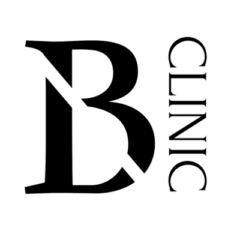How Much Does Sober Living Cost?
Content
Our purpose here is to summarize the most salient and relevant findings for SLHs as a community based recovery option. We then expand on the findings by considering potential implications of SLHs for treatment and criminal justice systems. We also include a discussion of our plans to study the community context of SLHs, which will depict how stakeholder influences support and hinder their operations and potential for expansion. These measures were taken from Gerstein et al. (1994) and labeled Peak Density and 6-month abstinence.
What does sober mean Bible?
The Bible defines sober as having a disciplined, controlled, sound mind. We have to filter our trials, temptations, tests, and every thought through scripture.
Peak Density is the number of days of any substance use (i.e., any alcohol or drug) during the month of highest use over the past 6 months (coded 0-31). Six-month abstinence was a dichotomous yes/no regarding any use of alcohol of drugs over the past 6 months. Some houses have a “residents’ council,” which functions as a type of government for the house. Individuals who have completed prison sentences may have to participate in additional addiction recovery to live in a halfway house as part of their reintegration into society. The oft-cited average is between 166 and 254 days, which means about five and a half to eight and a half months. It’s less important to compare yourself to the average and more important to speak to the professionals you’re working with about what’s working for you.
Risks and Downsides of Sober Living Homes
When you were active in your addiction, not only did the relationships you had suffer, keeping up with obligations and maintaining your health fell to the wayside. In sober living, you will learn vital life skills you need to support yourself once you move out. After treatment is over, people are faced with returning to their former environment or moving into Recovery Housing.
While some may be hungry to integrate back into society after a stint in a treatment program, there is an expectation that you will remain an active participant in the home and follow its rules. Some sober living houses may be placed in neighborhoods with high crime rates. A sober living home — sometimes known as a halfway house — is a residence that provides a structured yet flexible atmosphere for clients who have graduated from a more intensive level of treatment. Clients may stay for weeks, months, or longer in these facilities as they continue to evolve in sobriety.
Assessing the Impact of the Community Context
Consider asking folks at a recovery meeting or touching base with any sober friends you may have. If you recently completed a treatment program, contact the staff there for referrals to local sober houses. Most residents of these homes have recently completed an inpatient or outpatient treatment program.
In addition, it is important to note that residents were able to maintain improvements even after they left the SLHs. By 18 months nearly all had left, yet improvements were for the most part maintained. These measures were taken from the Important People Instrument (Zywiak, et al., 2002). The instrument allows participants to identify up to 12 important people in his or her network whom they have had contact with in the past six months.
What Are the Requirements to Get Into a Sober-Living Home?
You will also want to study and analyze any other sober living homes nearby to determine what works (and what doesn’t work) and determine how you will make your sober living home stand out from the competition. Returning to daily life after completing a drug or alcohol rehab program can be extremely challenging, especially for someone who lacks stable, substance-free housing. The early stages of recovery are often full of challenges, such as finding a job, establishing a sober community, and dealing with all the stress and anxiety of daily life. Sober living homes offer safety and support for people recovering from drug or alcohol abuse. You live in a substance-free environment while navigating the responsibilities of life in the real world. To join a sober living house, residents must pay their own rent, which could range anywhere from $500 to $5,000 per month, depending on the location and whether certain houses include meals and other services.

The resident learns the basics of living sober, abstaining from drugs and alcohol, and adhering to the sober living home’s rules while avoiding substance abuse triggers. Sober living houses encourage persons in this phase to attend therapy sessions, be actively involved in house chores, and attend peer support group sessions. Sober housing provides a non-medical drug and alcohol-free residence for persons recovering from substance abuse disorder. Tenants in sober homes live by the house rules and participate in programs like the 12-step meeting.
